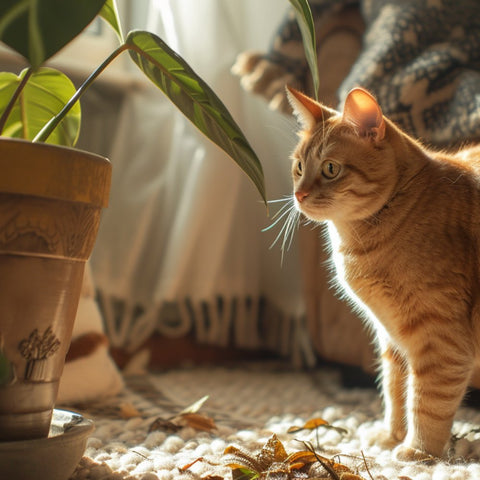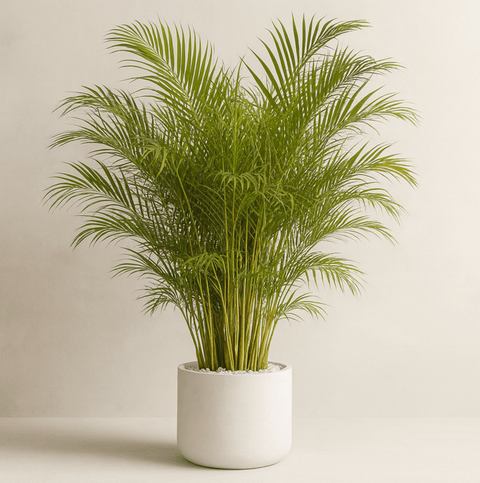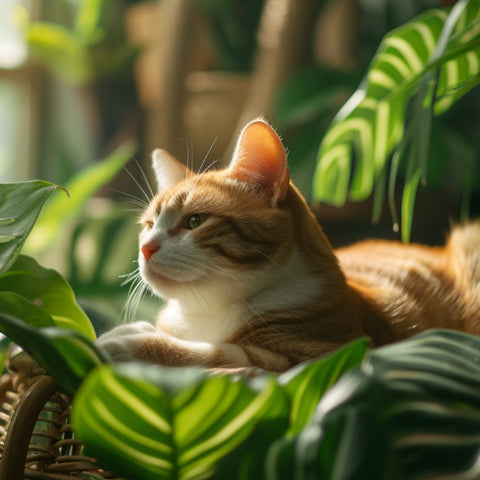Blog Post - Philodendrons: Toxic to Cats?
Introduction
Philodendron plants have become increasingly popular in recent years due to their unique foliage and low maintenance requirements. However, for cat owners, there is an important question that needs to be answered - are philodendrons toxic to cats? In this blog post, we will explore the issue of cat safety when it comes to philodendron plants, providing information on the potential risks and preventative measures that cat owners should consider.
Overview of Philodendron Plants

Philodendron plants are known for their striking and glossy leaves, which come in a variety of shapes and sizes depending on the species or cultivar. Common varieties include the heartleaf philodendron, the elephant ear philodendron, and the split-leaf philodendron. These plants are popular for their ability to thrive in indoor environments with minimal care, making them a favored choice among houseplant enthusiasts.
Aside from their aesthetic appeal, philodendron plants offer numerous benefits as houseplants. They are known for their air-purifying properties, helping to improve indoor air quality by filtering out toxins such as formaldehyde and benzene. Additionally, philodendrons can create a calming and soothing atmosphere in any living space, making them a welcomed addition to any home.
The Issue of Cat Safety
Cats are naturally curious creatures and often show a strong interest in exploring their surroundings, including houseplants. This curiosity can pose a potential danger if certain plants are toxic to cats. As responsible cat owners, it is important to be aware of which plants are safe for our feline friends to ensure their well-being.
When it comes to toxic plants, the consequences can range from mild gastrointestinal upset to more serious health issues. It is crucial to note that not all plants are toxic to cats, but it is always better to err on the side of caution and be familiar with the potential risks associated with common houseplants.
Identifying Philodendron Plants
Philodendron plants can be identified by their distinct appearance. They have large, glossy leaves that are typically heart-shaped or lobe-shaped, depending on the variety. The leaves often have a vibrant green color, although there are also variegated varieties with patterns of lighter shades.
Some common philodendron varieties include:
- Heartleaf Philodendron (Philodendron hederaceum)

- Elephant Ear Philodendron (Philodendron domesticum)

- Split-Leaf Philodendron (Philodendron bipinnatifidum)

These varieties vary in leaf shape and size, but they all share the characteristic appearance of philodendron plants.
The Toxicity of Philodendron to Cats
Unfortunately, philodendron plants are indeed toxic to cats. The toxic component in philodendrons is calcium oxalate crystals, which are found in all parts of the plant, including the leaves, stems, and roots. When a cat ingests any part of a philodendron plant, these crystals can cause irritation and swelling in the mouth, tongue, and throat.
Common symptoms of philodendron toxicity in cats include drooling, difficulty swallowing, pawing at the mouth, vomiting, and diarrhea. In more severe cases, cats may experience respiratory distress and swelling of the airways, which can be life-threatening if not promptly treated.
If you suspect that your cat has ingested any part of a philodendron plant, it is crucial to seek immediate veterinary care. The veterinarian will be able to assess the situation and provide appropriate treatment to alleviate the symptoms and prevent any further complications.
Preventative Measures for Cat Owners

While philodendron plants may not be safe for cats, there are still plenty of non-toxic houseplants that cat owners can consider. Some cat-friendly alternatives include spider plants, Boston ferns, and areca palms. These plants offer similar aesthetic benefits without the risk of toxicity.
When it comes to philodendron plants, it is important to keep them in a safe location where cats cannot reach them. Consider placing them on high shelves, using hanging planters, or using barriers such as baby gates to keep cats away from the plants.
Additionally, cats can be deterred from exploring harmful plants by providing alternative sources of stimulation. Interactive toys, scratching posts, and designated areas for playtime can redirect their attention and prevent them from getting into trouble with toxic plants.
Steps to Take if a Cat Ingests Philodendron
If you suspect that your cat has ingested any part of a philodendron plant, time is of the essence. Immediately remove any remaining plant material from your cat's mouth to prevent further exposure. Contact your veterinarian for professional advice and guidance.
The veterinarian will be able to determine the best course of action based on the severity of the ingestion and the symptoms exhibited by your cat. Treatment options may include inducing vomiting, administering activated charcoal to absorb any remaining toxins, or providing supportive care to manage the symptoms.
Conclusion
In conclusion, philodendron plants can be a beautiful addition to any home, but it is important for cat owners to be aware of their potential toxicity to cats. Understanding the risks associated with toxic plants and taking preventative measures can help ensure the safety and well-being of our feline companions. By choosing cat-friendly alternatives and practicing responsible plant ownership, we can create a harmonious environment where both cats and houseplants can coexist.






























Comments (0)
There are no comments for this article. Be the first one to leave a message!